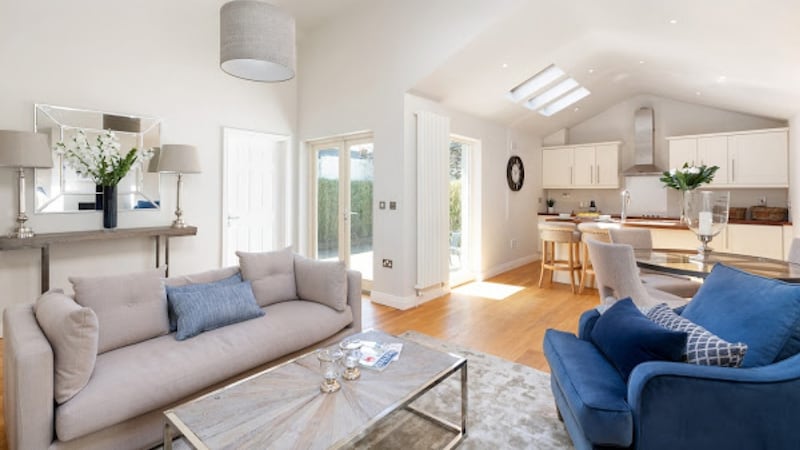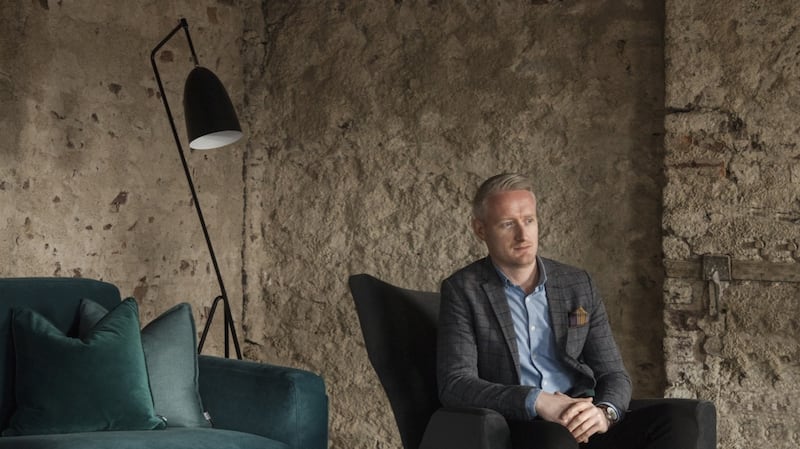Homes that present in walk-in condition are more likely to sell faster than their dowdier neighbours. But how to get that clean airy contemporary look that will give a house an edge when it comes to selling?How do you raise its profile and get it in front of more eyeballs? Stage it, says Christopher Bradley, a branch director of SherryFitzGerald.
Bradley believes a property appeals to more viewers when it is ready to walk into. “The first 21 days of the sales process are the most important and a house, if priced correctly, should sell within four to eight weeks. And a home presented well will get a better overall reaction, in the number of clicks and even possible editorial, getting more eyeballs on the property, than one that isn’t.
“Staging works for a house that is already in good condition but does not present well because it may have been rented and is showing wear and tear,” he explains.
“Turnkey is key. It’s about enhancing its already good bones,” adds Rena O’Kelly, Bradley’s fellow director at the agent’s Dalkey office. She estimates about 5 per cent of properties at the upper end of the market are staged for sale and has had clients spend as much as 5 per cent of the value of a €1 million property, €50,000, on refreshing it, redoing all bathrooms, adding an ensuite, replacing the carpets and painting to sell. And it worked. The four-bedroom mid-terrace house of about 210sq m came to market asking €1.25 million and achieved that asking price. But that was back in 2016 and the market at that level has softened.
Better sale price
A more recent example from last season far better illustrates her point. Two four-bedroom homes, each about 138sq m , came to market in a development in south county Dublin. The one with the better aspect had a southwest-facing rear and was owner-occupied. It sold for €460,000 and took five months to close. The other, a tired, former rented property with a northeast-facing rear achieved an asking of €490,000 and took just three months to get over the line.
Breeda O’Sullivan of Beyond The Clutter was the stager of that property. She works in a slightly different way to other staging firms in that she runs the interiors arm, Hunters Interiors, of Hunters Estate Agents. A cottage in Blackrock staged by her (see picture) went for €65,000 over the asking price in just two weeks while a property in Foxrock went for €25,000 over the asking price in six weeks.
“We set it up because so many properties that we were bringing to the market were empty, soulless and lonely-looking and having engaged the services of staging companies we wanted to take a slice of that revenue and decided to take it in-house,” explains Hunters director Bobby Geraghty.
Having come from a beauty business background (O’Sullivan brought Jessica Nails to Ireland decades ago, supplying 700-plus salons) she understood the need for aesthetic polish. And first impressions matter as much in the home staging business as in the beauty business. A well-presented property sells faster, she says. “It’s about filling a space and all about your online presence and how the pictures look.”
A consultation costs as little as €150, within the greater Dublin area, and she notes everything from the front gate in. She can recycle furniture, believes in good thick underlay and new carpets, at least on hall, stairs and landing. This gives a great feeling underfoot when would-be buyers first cross the threshold.

Prices typically range from €9,000-€12,000 for furniture plus set-up and delivery. This doesn’t include painting or flooring refreshes. She also organises garden clearances up to and including the removal of trees that are blocking light.
Is it worth the outlay? Using a staging service will usually see a 10 per cent increase in the sale agreed price, she says. A house that comes to market asking €400,0000 may have been staged for sale at a cost of about €10,000 and achieve a sale agreed price of €440,000. Add new carpets and painting, about another €4,400. That’s still an additional €25,600 that you wouldn’t have received if you hadn’t staged it.
Covering cracks
Darrán Lennon is managing director of Hyde (formerly Fitout Interiors), where 40 per cent of business is staging homes, mainly those valued at €750,000 or upwards and mostly in the €1.5 million to €2 million price bracket. “It is a financial commitment. It’s about creating a living space to maximise value.
“While prices start from about €10,000 a typical two-storey over basement period home will cost from €20,000 to €25,000 and more. Some clients spend €60,000 to €70,000.”
He says the core of the property has to be in good condition before it is staged, echoing the agents. “It’s not easy to cover years of cracks but such repairs are part of the service. This creates a better canvas for a fresh paint job. New carpets are laid and any leaks addressed.” He’s quick to jettison hangovers of the Celtic era.
“These are likely to deter a buyer and have to be neutralised,” he says. Examples include red gloss kitchens and Jacuzzi hot tubs in the garden. In that particular house he replaced the kitchen doors with ones painted in a soft sage green but kept the marble countertops. The hot tub was cut in half and dumped.
It’s normally the agent not the owner that he meets to discuss the property. “The agent will then advise the client,” he explains. “This helps to drive down the emotional aspect. We find we get a better result when we’re given free rein and the less we engage with the owner.”
Staging services is an investment and it is a challenge to create a new look for every client. This is why he is constantly topping up stock levels and has hundreds of thousands of what he calls “props”; the furniture and furnishings that range from ultra modern to faux Georgian, that help sell a space.
“People think you’re fluffing cushions but it’s about project management and logistics.” He has a warehouse with an estimated €2 million worth of stock that includes a baby grand piano. He opts for reproduction furniture rather than originals, because it’s easier to move and to install and he can better match or contrast looks.
Staged and unoccupied
The first rule of staging is that the property isn’t occupied while it’s on the market, says Marie Louise Keeley, interior designer at House & Garden Furnishings. “You don’t live in a staged property. We can’t rent a high-end look for you to go and have a glass of vino on a Friday night on our nice cream sofa.”
Her company transforms hundreds of properties each year, many of them in the €850,000-plus price bracket. These homes are often investment properties that have been rented out for a time and need freshening up. Ideally the owner will be prepared to spend on a makeover – such as new bathroom and kitchen, painting and new carpets – before the property is staged. She estimates that this work can cost €25,000-€30,000 for a 125sq m home. Then it will be ready for furnishing.

With three warehouses in Dublin and one in Kilkenny, the company also sells furniture that has been used in staging, should you wish to take on the task yourself.
Is there a look that sells better? Yes, it seems, depending on the post code, says Keeley. “Donnybrook to Dalkey is a particular look,” Keeley explains. “It’s the large black cabinets, luxury Zoffany silks, piping on the sofas, classic contemporary; if you’re in town, say from Barrow Street to Stoneybatter it’s all mid-century, a more accessible approach.”
The standard rental is three months, says Darrán Lennon, but the furniture typically stays in place after a property has gone Sale Agreed and until contracts have been exchanged. “In out experience properties sale agree quickly but we don’t put the agents under any pressure to take stuff back until the house is sale agreed.
While staging helps to remove the empty home feel if investing in this service, don’t shortchange the vendor and remove the furnishings before the sale has gone through, advises Muriel Simpson, associate director at House & Garden Furnishings. When househunting herself, she fell for a property that had been attractively presented and staged for sale. When she viewed it the second time its owners had already started dismantling the dream. “There were marks on the carpet where furniture had previously stood and it all looked a little sad. The warmth had gone out of the house. I got a different feeling on that second viewing.”
She passed on the purchase.












